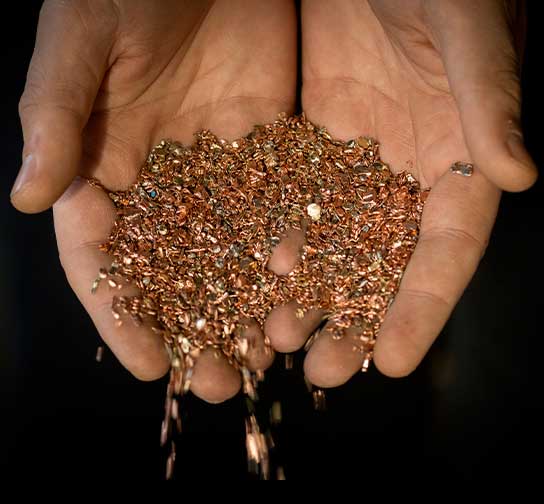
Properties
Antimicrobial and Robust
Copper and copper alloys have antimicrobial properties: this means that they can neutralize viruses and bacteria in a short period of time, reducing the risk of spreading and transmission of infections. Pathogens that these materials can elimiate include bacteria such as E. Coli, Salmonella, MRSA, Campylobacter, Legionella, and Pneumophila, as well as viruses such as influenza, rotavirus, HIV, and coronaviruses, including SARS-CoV2. A study by the Institute of Virology at the University of Pisa recently showed that copper can reduce the viral load of SARS-CoV2 by 90% in 10 minutes and neutralize the virus 100% in one hour.
For these reasons, copper is an ideal material for objects frequently touched in public life that can contribute to the spread of infections, such as handles, fittings, handrails, bars, switches, etc.
Sustainability
Ecological through
and through
Copper is 100% recyclable and retains all of its original properties indefinitely, regardless of how often it has been recycled or used. In fact, it is estimated that 80% of the copper extracted since ancient times is still in circulation today, and 1/3 of the copper used worldwide is from recycling it. In Europe alone, over two million tons of copper is produced from old products or production waste.
Copper, therefore, plays a key role in the circular economy for us and future generations: By recycling copper, we can make a decisive contribution to environmental protection by saving over 900,000 tons of CO2 every year.

Thanks to recycling, we can ensure the availability of this precious metal for the development of functional technologies to facilitate the energy transition. In fact, copper is a metal that is widely used in systems for generating energy from renewable sources, from wind to photovoltaics to geothermal energy, but also in electromobility: Consider that every electric car contains around four times more than conventional cars.

History
A millennium-old
success story
With the end of the Stone Age, copper opened a new era in human development. Today’s archaeological findings show that copper was used to make jewelry and coins ten thousand years ago. In Europe, the Similaun man “Ötzi” testifies to the use of copper in the Alps as early as 3,200 BC: He had an ax with a point made of 99.7% pure copper and arsenic was found in his hair, which was then used for the production of copper. Since 2750 BC. copper has been used in the development of cities, especially for the construction of water systems. The discovery that it can be combined with other metals to form copper alloys such as bronze favored the development of civilizations and the transition to new epochs of mankind.
More recently, in the eighteenth and nineteenth centuries, copper was a key element in some of the most important discoveries related to electricity and magnetism: it was used by Ampere, Faraday and Ohm, among others, who led the Industrial Revolution.
Even today, copper is still indispensable to meet the needs of modern society. Worldwide copper consumption has tripled in the last 50 years and will grow even faster in the future. Expanding the technology will be essential to ensure copper production and availability for all.
